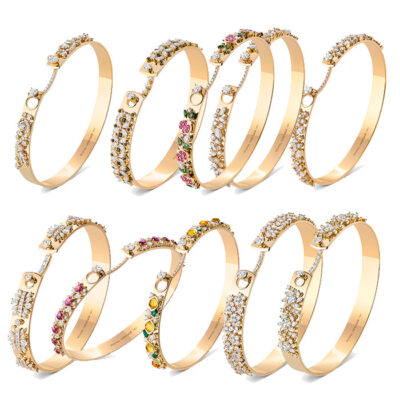Style
26 May 2024
Share
René Boivin and the mystery of the “Torque” bracelet
When an artistic director from a major fashion house asked him for a “Torque” bracelet, Thomas Torroni-Levene realized that it was necessary to safeguard the know-how and manufacturing technics while there was still time. In order to be able, one day, to recreate it under conditions absolutely identical to those of the past.
By Sandrine Merle.
This unexpected request for a “Torque” bracelet triggered a real investigation: Thomas Torroni-Levene, René Boivin’s temple keeper, wanted to retrace its history. In other words : who made it, when it was created and, above all, the manufacturing techniques that led to this powerful silhouette, this open bracelet formed by twisted silver wires, with a gold ball at each end.
Who created the “Torque” bracelet?
Recognizable at first glance, the “Torque” bracelet retains a great deal of mystery. To begin with, some call it “Torque”, others “Barbare” or “Cord”. The René Boivin archives (acquired in 2019) have been painstakingly searched, classified and analyzed by Torroni-Levene, but to date, no information has been forthcoming. Torroni-Levene has only found a plaster cast of a rather similar bracelet, dating from the 1930s. But this bracelet seems a little finer; moreover, it bears a striking resemblance to a late 19th/early 20th-century piece from the Akha tribe (from Laos or Burma), from the collection of dealer Claude de Marteau. All this would suggest that Suzanne Belperron is the author. Let’s not forget that in her youth, she spent a great deal of time in the ethnographic collections of the Musée de Besançon. But we can’t be 100% sure.
How to date a “Torque” bracelet?
“Torque” bracelets were produced in the René Boivin workshops until the 80s. When was the first one made? We don’t know. Who bought it? The archives have yet to reveal a name, but thanks to a photo, we know that Nadine de Rothschild wore one in the 80s. It would also have been available with lapis lazuli balls. But how can we date a specific model that we have to hand? For the moment, there’s no way of determining the date of manufacture from the technique used,” explains Thomas Torroni-Levene. They were all made by hand, using the same tools and techniques, and tailored to the client’s anatomy and wrist size. The only telling indications, when present, are the workshop hallmarks.”
How was a “Torque” bracelet made?
Eager to preserve the savoir-faire inherent in René Boivin jewelry, Torroni-Levene sought out the last head of the workshop. He tracked down the man who made the “Torque” bracelets in the early 2000s and convinced him to get back to work… There was still time for him to pass on this know-how to someone younger. He rebuilt the necessary tooling, such as the mandrels – steel rods around which 7 meters of silver wire are wound into 12 strands, each formed by two twisted wires. Each piece requires over 30 hours’ work. But shhhhh… Thomas Torroni-Levene jealously guards the manufacturing secrets of one of René Boivin’s most emblematic jewels. But most importantly of all, the know-how of the “Torque” bracelet has not been lost.














